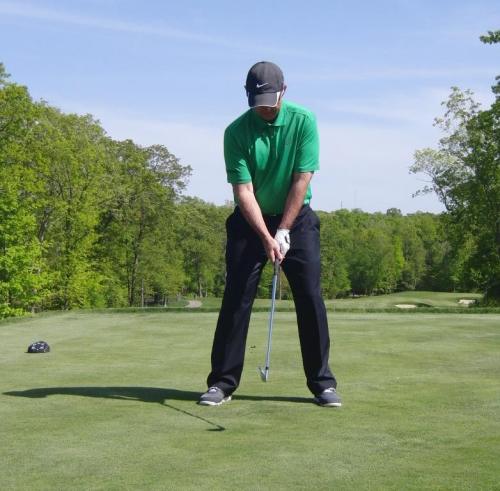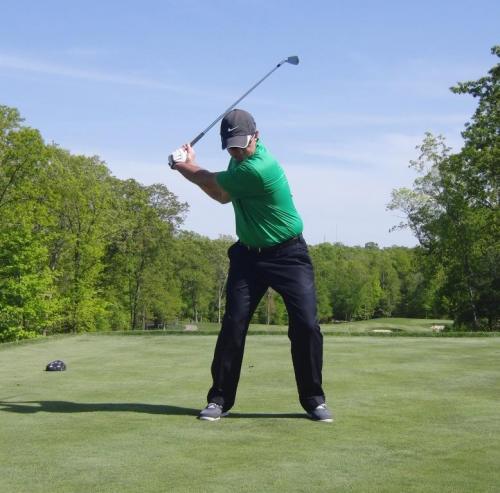The golf swing should be a smooth, rhythmic motion that easily produces a lot of club head speed allowing the player to hit the ball longer. But too often this is not the case.
Excessive tension in the golf swing is typically the result of one or two things. Either the player is working on learning a new position or they are afraid of where the ball might go and are consequently try to steer the ball to the target.
Making a swing change is often required if you want to improve a part of your game. To do this you will need to move the club and probably the body in a different way compared to what you are accustomed. Initially, this will require a lot of cognitive thought and muscle activity to accomplish. After you have put in the time and done the practice so that achieving the new swing position is more natural, it is then you need to start to monitor how you will incorporate this into your full speed swing.
As you change your swing, then tension in your hands, wrists and arms will more than likely increase as you ask the club to work differently. But once the motion is easier to perform you then want to start to back off that tension and work to make the new motion part of a fluent golf swing.
As far as steering the ball goes, manufacturers spend millions of dollars and countless hours designing golf clubs to help you hit the ball straight. Your attempts to control the club and force the ball to go to your intended target only serve to interfere with the club design. If you swing positions are reasonable and you let the swing flow, the ball will go to target far more often.
A great drill to help with reducing the tension levels during the swing, decrease effort and increase club head speed is a recoil drill that I learned many years ago from Ian Triggs, one of Australia’s leading coaches. In this drill you start with the club at waist high in front of you and gently swing the club into a backswing around yourself. As the club gets close to the end of the back swing, start the lower body into the down swing so that the club is moving one way as the body starts to move the other.
As you work on this drill try to keep the wrists as tension free as possible. If you do this well, you will feel a lag effect between the club and your arms. When doing this drill, my students often tell me how they feel the core working and the club moving much more quickly than normal. Once you have a good feel for this at hip high, drop the club to knee high, then ankle high. Then you can hit a tee and finally take it to a ball. On the first swings with a ball stay focused on your tension levels and feeling the recoil rather than where the ball goes.
The key is to just let it go the fear and control and simply observe the ball flight. You might be surprised how good it can be without all that tension.
Change of Direction Drill – Start
Change of Direction Drill – Downswing
I hope you enjoyed this post on. As always comments are welcome and encouraged.
Good Golfing,
Derek Hooper.
PS. If you really enjoyed this post, please consider helping me out and spreading the word below. Thanks!




